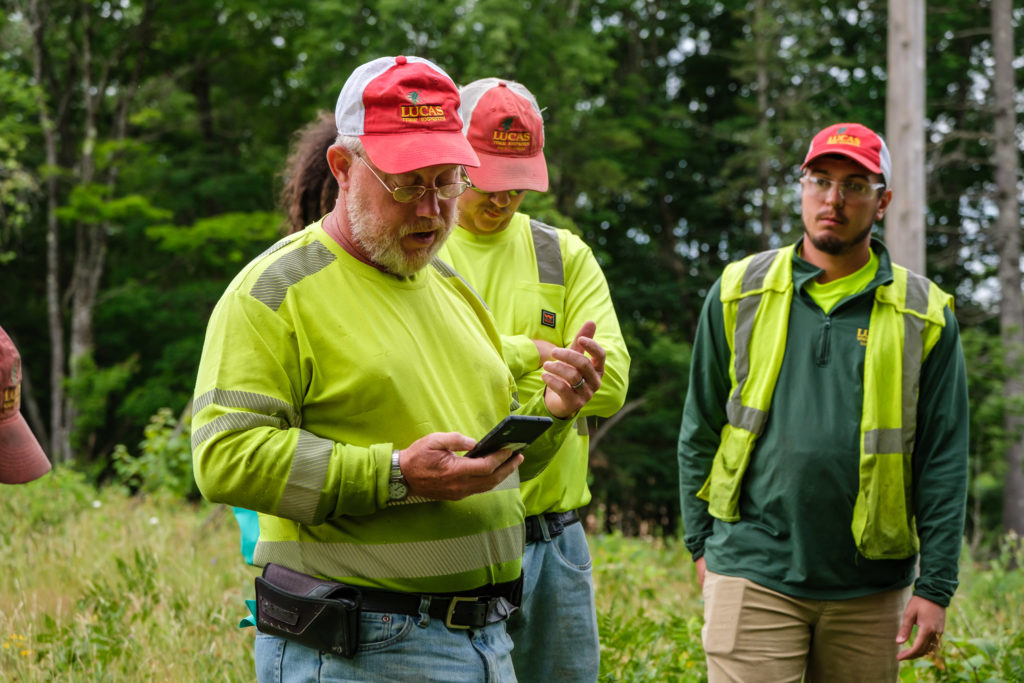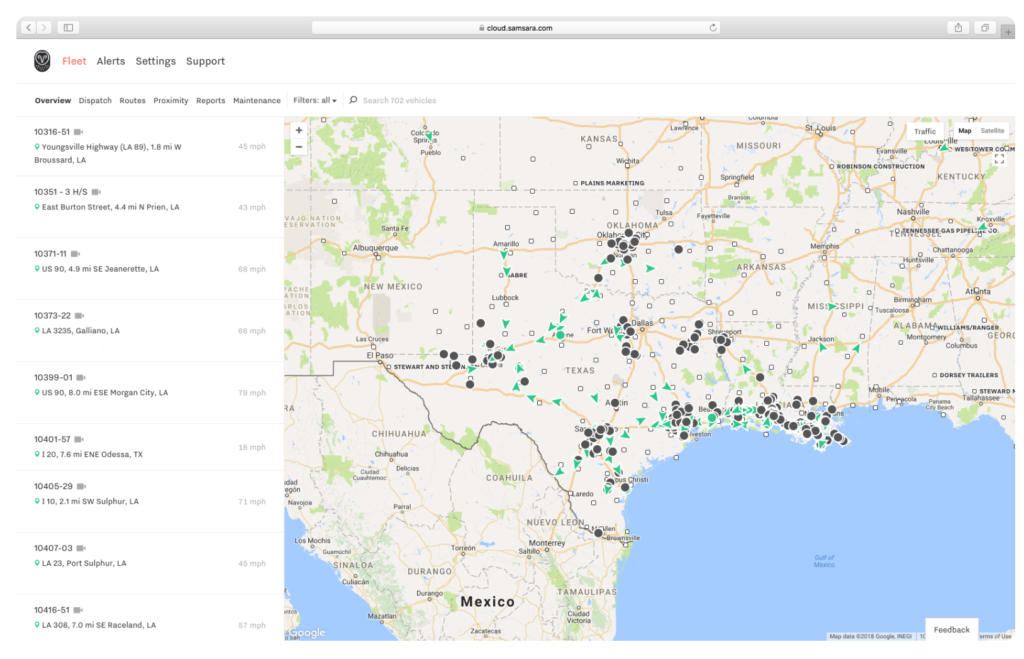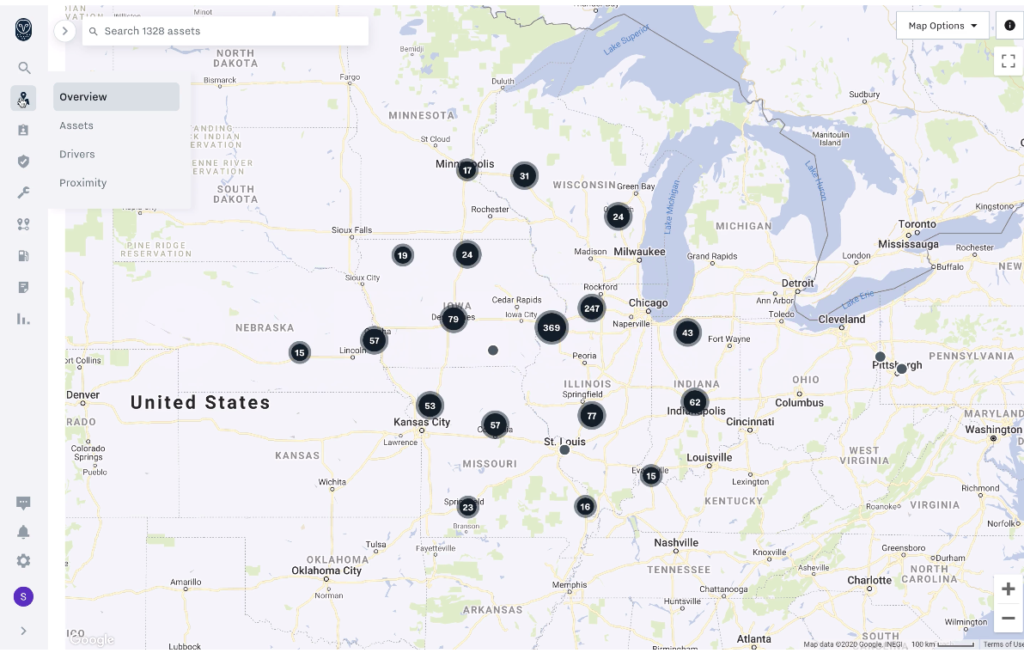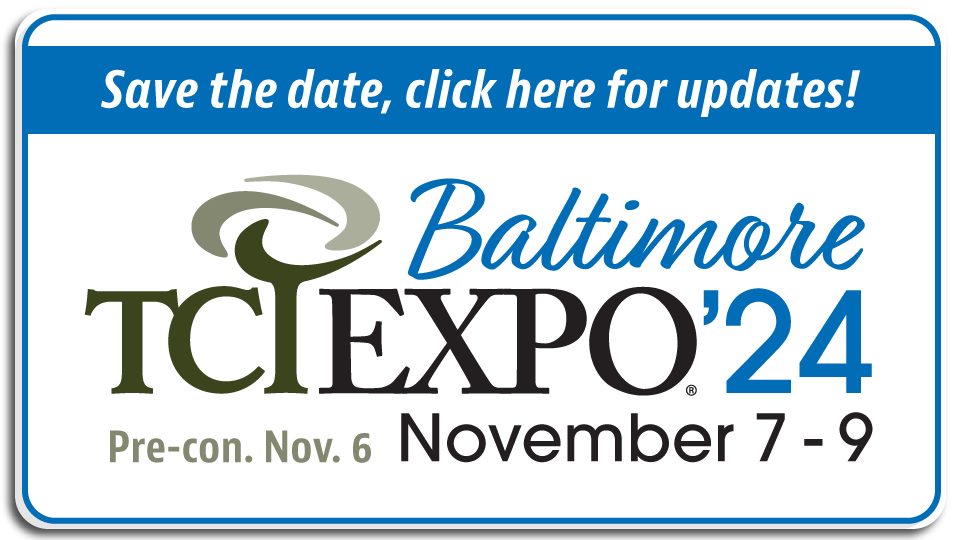Leveraging Software for Greater Profitability
It is more evolution than revolution, but the paper-and-pencil tree care industry has advanced to the modern age. As a result, some arborists’ toolboxes include not just the chain saw, chipper and grapple saw, but also the many software packages that help drive businesses to greater profitability.
“We’re using it in a variety of ways,” says Art Batson III, CEO of Lucas Tree Experts and the third generation to work in his family business. He echoes the sentiment of other tech-savvy execs who say technology helps them run a better operation, which leads to a better bottom line – and much of it can be run from the field.
“We are constantly look for ways to leverage technology to improve our business,” says Jake Van Yahres, co-owner (with his sister, Shana Clarke) of Van Yahres Tree Company in Charlottesville, Virginia, citing the example of his fleet-inventory software from Ascend.
“I could look at our custom digital dashboard right now and tell you how much fuel is in each vehicle,” Van Yahres says. “It definitely makes managing our fleet more efficient.
“We’ll get a customer who calls and says, ‘I just wanted to know what time you guys are going to be here.’ Before, we would have to call the crew leader, who would have to take our call, and then we would have to relay (their answer) back to the customer. Now we just say, ‘Give me five seconds,’ and we can pull it up and say, ‘They’re right around the corner and will be there in just a second.’”

Streamlining operations
Companies are using software to maintain customer relationships, run their books and human resources, run their fleets and gather information from the field. It is creating better communication, quicker turnaround for customers and better operations in an industry where efficiency leads to a better bottom line.
“I think COVID helped expedite some of the processes going digital and some things becoming a little bit more streamlined in the green space,” says Larry Martony, managing partner of Irvine, California-based The Arbor Group. “It’s a pretty old-school business.”
“Traditionally speaking, people would depend on pen and paper or perhaps spreadsheets,” says Abel De La Mora, software support specialist for PlanIT Geo, which produces software for the tree care industry, including a tree-inventory system called TreePlotter Inventory. “That’s tried and true, but I think if there’s one thing COVID taught us, it is that having a software solution in place that could be accessed by anyone and allow them to see what the folks in the field are collecting in real time is a time saver, and a much more efficient way to run your business.
“Time is money here,” De La Mora continues. “If you have one estimator who is cranking out six estimates a day and has to drive to six different job sites on any given day, that’s not bad. But if that same estimator can double his or her numbers on a daily or weekly basis, now those are great numbers. You’re increasing your pull of opportunity.”

Covering ground
One of technology’s biggest strengths is that it enables the user to take in – and act on – a lot of information.
Based in Portland, Maine, Lucas Tree Experts maintains thousands of miles annually for utilities along the east coast of North America, from the Canadian Maritimes down to Georgia. To do that, the company integrates its ERP (accounting), HRIS (human resources), LMS (learning management system), CSS (customer service software), Fleet Telematics (vehicle management) and its own data-collection technology into one business intelligence (BI) tool to help analyze the data.
“As we continue to integrate our various software solutions, we are leveraging that data to make more informed business decisions,” says Batson. “We are using software and technology to give us more real-time and accurate reporting. That’s allowing us to improve the safety and efficiency of our operations, our bidding process and communication throughout the organization, since our workforce is remote.”
Of particular interest is the data-collection tool, which Lucas has developed and is planning to bring to market (no launch date has yet been set) under the name Fieldpak. The mobile solution, used through an app or a browser on a cellphone or tablet, allows in-field data collection on customized forms to integrate with other software solutions through an open API (application programming interface).
“We’re using mobile technology to collect our time, identify vegetation and measure our productivity,” Batson explains. “But it is the combination of various datasets, such as our field data, the vegetation density from satellite imagery or LIDAR (laser imaging, detection and ranging) and weather information, to name a few, integrated with the utilities’ GIS (geographic information system) data, where we see a tremendous opportunity to play a part in improvement of their maintenance programs and restoration of their systems after weather events.”

Commercial success
On the other side of the country, Larry Martony and two partners in The Arbor Group planned to investigate and adopt technology from the start when they founded their Southern California company at the beginning of the pandemic, in June 2020.
“The systems we have in place are extremely streamlined,” says Martony, whose company employs 38 people full time and is expected to gross $7 million in their second full year, focusing largely on commercial properties. “It allows us to scale and grow profitably with high margins while operating with high quality, safely, as well as without many indirect employees. So we can get from $20 million to $25 million in business with 15 to 18 people in management, which is unheard of.
“You have accounts payable, accounts receivable, an HR person, payroll, IT. I mean, there are just so many layers,” he adds. “But with technology now, and software, you can have a platform that does all of that, and you almost don’t need anyone in the office side of the business. These platforms put the power in the hands of the employees. Instead of them coming to us saying, ‘I need to add my dependents,’ or ‘I need to change my W2 information,’ it’s all on an app, and they update it themselves. You have to coach and develop them on how to use the system, but once they know how to use it, they really like it.”
Arbor Group employees use systems on their smartphones like Gusto to clock in and out, and Google Workspace to communicate. They use ArborNote software, integrated with an accounting system from QuickBooks, to make the bid-to-invoice system seamless.
“You go out and collect the data on a property, close it and send the bid to the client. They approve it, it goes into the scheduling tool and the teams have iPads for digital work orders,” he explains. “We’re using the work orders to keep track of the trees on a daily basis on projects, and also to track gross margins on a daily basis.
“Instead of waiting until the end of the job to see if we made money or not, we know on a daily basis how many trees we need to prune based on the hours of the project, and how many hours we’re trending,” he says. “We can make course corrections on the fly. If day one goes by and we’re at 83% to goal, we can maybe send another boom truck. Maybe it’s overproducing, or we can add a loader to the job site to clean up the debris more efficiently. All those things are going into margin and profitability. We can fine tune it and know.”
When the job is complete, they then invoice customers through the QuickBooks program.
The company also uses Samsara fleet-management software, which, among many other features, has cameras facing both the driver and the driver’s view. If a driver’s head movements indicate distraction or another issue, they receive an audible alert from the system.
“The system’s good because you can still manage through the system without having to micromanage it yourself,” Martony says. “It also ranks drivers, so drivers who are ranked greater than 90 get positive feedback and things like gift cards. Bad drivers get coaching,” and possibly end up in a driving class.
The system also can measure fuel efficiencies against other vehicles in the fleet to be certain they are driving efficiently.

Government cooperation
Another adopter in Southern California (and Arizona), Mariposa Tree Management Inc., does a large amount of its business with public-works agencies, according to tree division estimator Brandon Williamson.
As such, the company uses a variety of software systems, matching the software with whatever the municipal client uses or needs. Included in that is the PlanIT Geo TreePlotter, a Davey product called TreeKeeper, a city’s asset-management software called Gov Clarity, ArcGIS, and others.
“For us as a company, being able to transition from using a paper printout or a Google map to having our crews log on to a tablet and see all of the trees they’re assigned for the day, it makes the workflow process real smooth,” Williamson says.
It also allows the company to track very specific information.
“We’ve integrated the tree inventory system into our workflow to manage our clients’ inventories from top to bottom, especially with Davey’s TreeKeeper system. There’s actually a way for us to manage every PO (purchase order),” Williamson explains. “We can use the built-in project-management tool to assign work to specific projects within the software, which allows us to track the costs for each tree that receives work. This allows us to not only track our work produced on a daily basis, but also allows our clients to see their expenditures in real time as work is completed in the field.
“With these tools, we can analyze our operations. For example, we can say, ‘We can average 35 trees a day doing this type of work, but are we actually hitting those numbers?’ And we can see that on a day-to-day basis.
“That information can be used to make changes in the field to crew sizes or equipment composition to make sure we are being safe and productive.”
Mariposa isn’t the only entity receiving information. The shared system also enables the client to follow the work, observing the same spacious area.
“It’s transparent,” Williamson says. “Really, what it boils down to is that they give me a list of trees they want done. I create a work order in the system, and then they can see it when the work is done. Not only can they view the work and costs using the inventory system, I also can print out that list, create a bill and send it to them for their records. They know exactly which trees were trimmed and how much it cost them, not only by receiving the records we provide, but on the inventory system itself.”

Multiple uses
Van Yahres Tree Company was founded by Jake Van Yahres’s great-grandfather and turns 104 in 2023. It employs roughly 15 people. Van Yahres and his sister are the fourth generation to own the company.
Using Microsoft’s suite of products on a phone or laptop, they can keep an eye on operations and the company’s fiscal health. They can monitor expenses in the field and tell whether a specific job “is a win or a loss,” and they’ve also turned it to another area – employee pride and motivation.
“What I always thought was a little bit lacking in the tree care industry is that our crews go out and do some pretty incredible things every day and we don’t get a chance to see it,” says Van Yahres. With that in mind, he set up a system to collect grades and reviews for certain jobs and a rating for overall performance. It’s an effective motivational tool, he says, noting that keeping morale high will attract future employees and lead to better retention.
While much of the company’s business is residential, Van Yahres also uses software with an important institutional client, the prestigious Hollywood Cemetery in Richmond, Virginia. It’s been named one of the 30 most beautiful cemeteries in the United States.
Using PlanIT Geo’s TreePlotter software, Van Yahres rates all of the cemetery’s 2,500 trees according to their current condition, species and location to determine their overall importance rating, and the digital inventory system allows the company to maintain an efficient and cost-effective management plan.
“We’ve been caring for their trees for more than 30 years,” says Van Yahres, who still owns the first paper-recorded tree inventory done by his grandfather. “It’s a big, three-ring binder, and it has all the trees in it and what their condition is,” he says.
“It’s a little bit hard to manage a property with a three-ring binder and to track all of the work done on each tree. So what we have now with (the TreePlotter software) is that every single tree is in the digital inventory. It’s so much more efficient to keep track of everything.”
Evolution of the industry
Computer software packages geared specifically for tree care are not new, but if there is an increase in the adoption of the technology, the reason is as obvious as the change of the seasons in New England.
Not surprisingly, the execs who spoke with us for this article are in their 30s and 40s. This shift away from paper is an industry move that everyone saw coming.
“When my grandfather owned the company, my dad came (to work for him), and he had been working in the lumber industry,” Van Yahres recalls. “He had come back to the company and was taking a look around and seeing what Mitch, my grandfather, was doing. And Mitch had a stack of bills to send to clients. They went back months, and he still hadn’t sent any of these out. They’d already done the work. And my dad was like, ‘What are you doing? You’ve got to get these sent out to clients. How are you getting paid?’
“So that’s how it used to be 30 years ago. Now we have all systems and processes tracked so everything goes out on time. Back then, his profit was literally on his desk; he just wasn’t doing anything with it.”
“At the end of the day, the tree care industry as a whole is an extremely competitive and cost-intensive industry,” says PlanIT Geo’s De La Mora. “For these operators, profit margins are crucial. So, one way you can help increase profits is by taking advantage of having a software solution that can be accessed by anyone at any time.
“That’s where the world is heading, right?” De La Mora says. “Having a reliable cloud-based software application that can help you manage your day-to-day operations, that’s becoming the norm. It’s these individuals who are going to be driving the future of this industry toward that path of smaller, faster, better, more efficient and with higher revenue. That’s what technology brings you.”




